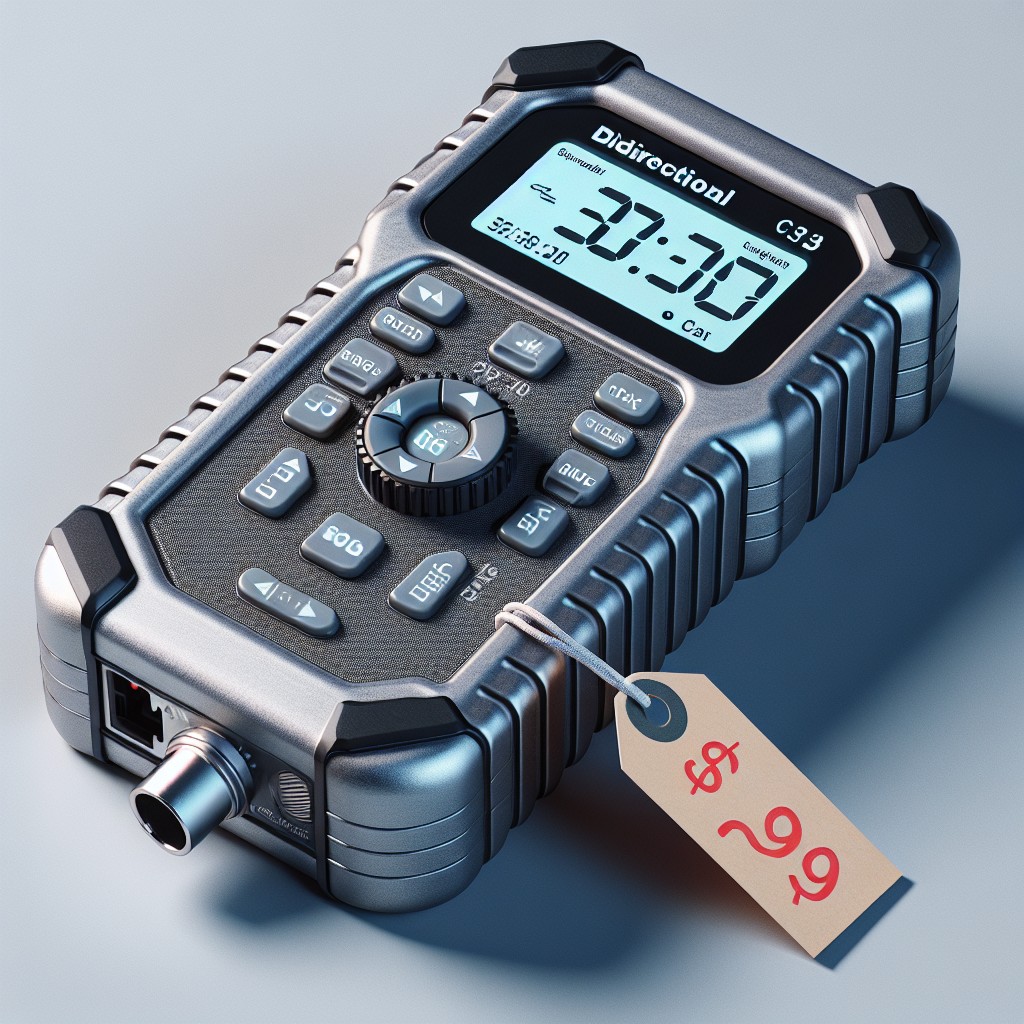Last updated on
Delve deeper into the world of bidirectional scan tools because these cost-effective, efficient devices can transform your auto repair game.
Unlocking the full potential of vehicle diagnostics without draining your wallet is possible with the right bidirectional scan tool. These sophisticated devices do more than just read trouble codes; they actively communicate with a car’s various systems, allowing you to conduct advanced tests and even reprogram functions as needed.
Whether you’re a professional mechanic or a dedicated DIYer, finding a scan tool that combines comprehensive features with affordability is key. From the necessary compatibility with your vehicle’s make and model to the convenience of live data streaming and reliable technical support, this article will guide you through popular budget-friendly options like the Foxwell NT510 and the Ancel AD610 Elite, as well as what to look for to ensure your choice enhances your diagnostic capabilities effectively.
Discover how to make an informed decision as we delve into the features, user feedback, and technical details that set these cost-efficient tools apart.
Key takeaways:
- Bidirectional scan tools allow active testing and interaction with a vehicle’s systems.
- Essential features to consider in a budget-friendly bidirectional scan tool: compatibility, live data streaming, software updates, user-friendly interfaces, and technical support.
- Popular affordable bidirectional scan tools: Foxwell NT510, Ancel AD610 Elite, BlueDriver Bluetooth Pro, Autel MaxiDiag MD808 Pro.
- Bidirectional scan tools establish interactive communication with a vehicle’s systems and can initiate tests or reprogram systems.
- When shopping for a bidirectional scan tool, consider vehicle compatibility, protocol support, manufacturer-specific functions, software updates, user reviews, and manufacturer lists.
Understanding Bidirectional Scan Tools

Bidirectional scan tools, also known as active testing or two-way communication scanners, are advanced diagnostic devices that not only read vehicle error codes but also send commands to the car’s systems for testing and operation. They are essential for mechanics or DIY users aiming to interact actively with a car’s onboard computer, performing tasks such as fuel pump activation, testing solenoids, and controlling non-critical functions like the horn or the wipers.
Unlike standard code readers, these tools can request information or command a particular action from the system being tested, thereby verifying the communication and function without physical disassembly. This dual communication stream allows for more in-depth diagnostics, pinpointing the exact issue a vehicle may have, saving time and ensuring a more precise repair process.
They’re particularly useful for complex tasks such as resetting adaptations, calibrating sensors, and advanced functionalities like injector coding, or key programming, which would otherwise require a visit to a dealership or a high-end repair shop. With a bidirectional tool’s ability to actively engage with a vehicle’s electronic control units (ECUs), it’s a key element in today’s advanced vehicle diagnostics.
Features to Consider in a Budget-Friendly Bidirectional Scan Tool

When targeting a cost-effective bidirectional scan tool, pinpointing essential features maximizes your investment. Compatibility is pivotal; ensure the tool speaks the language of your car’s make and model.
Live data streaming is a must-have for real-time diagnostics, and comprehensive system coverage guarantees you can delve into a wide array of issues.
Software updates keep your tool abreast with the latest vehicles and fixes, while durability ensures your device withstands the rigors of the garage.
User-friendly interfaces reduce learning curves, increasing efficiency during vehicle diagnostics.
Consider the availability of technical support, so assistance is at hand if you run into complex vehicle puzzles.
Some tools offer advanced functions like coding and programming; if you’re delving into serious repairs, these could be game-changing features.
Remember, investing in the right combination of functionalities not only saves money but also time, making budget-friendly bidirectional scan tools a wise choice for home mechanics and professionals alike.
Popular Affordable Bidirectional Scan Tools On the Market
When shopping for an economical option in the realm of bidirectional scan tools, several models stand out for their performance while keeping the budget in check.
The Foxwell NT510 is a user-friendly choice, renowned for its capacity to perform advanced functions like actuator tests, without the hefty price tag.
For DIY enthusiasts, the Ancel AD610 Elite offers a blend of affordability and functionality, enabling access to ABS/SRS systems, steering angle sensor calibration, and more.
BlueDriver Bluetooth Pro, though a bit different as it connects to a smartphone app, challenges traditional handheld devices with its portability and comprehensive diagnostics, all at a competitive pricing point.
The Autel MaxiDiag MD808 Pro merges thorough diagnostics with affordability. It covers a wide range of vehicle brands and permits users to execute various system tests and service functions.
Investing in any of these tools equips you with the ability to interact with your vehicle’s systems, potentially saving on diagnostic fees and empowering you with insight into your vehicle’s health.
How Bidirectional Scan Tools Function
At the core of automotive diagnostics, bidirectional scan tools stand out for the interactive communication they establish with a vehicle’s systems. Unlike basic code readers, these advanced gadgets send commands to a vehicle, actively testing its functionality.
Think of them as a two-way street: they not only read data but also send signals to various components to initiate tests or reprogram systems. For instance, when you command an ABS module to bleed, the scan tool signals it to perform this action, facilitating live diagnostics without manual intervention.
The process is straightforward:
- Connect the scan tool to your vehicle’s OBD-II port.
- Select the system or component you need to diagnose.
- Choose the function you want to perform, like actuating parts, reprogramming, or even key fob programming.
Keep in mind, successful operations hinge on compatibility – the tool must support specific functions for your vehicle’s make and model. This capability turns these tools into invaluable assets for automotive enthusiasts and professionals looking to streamline diagnostics, enhance efficiency, and gain a comprehensive understanding of a vehicle’s health.
Comparing Vehicle Compatibility
When shopping for a bidirectional scan tool, it’s essential to ensure it supports the specific makes and models of vehicles you plan on diagnosing. While some tools offer broad coverage compatible with a variety of domestic, Asian, and European vehicles, others may be more limited.
1. Protocol Support: Look for tools that support OBD2 protocols such as PWM, VPW, ISO9141-2, KWP2000, and CAN. This ensures compatibility with most vehicles manufactured after 1996.
2. Manufacturer-Specific Functions: Some tools offer enhanced features for certain brands. If you specialize in a specific make, consider a tool that provides advanced diagnostics for that brand.
3. Software Updates: Ensure that the tool you choose offers regular software updates. This helps to keep the tool current with the latest vehicle models and emerging technologies.
4. Check User Reviews: Often, the best gauge of real-world compatibility is feedback from other users. Look for reviews that mention successful connections with the types of vehicles you’ll be working on.
5. Consult Manufacturer Lists: Most tool manufacturers provide a detailed list of supported vehicles. Before making a purchase, confirm that your target vehicles are on this list.
By keeping these considerations in mind, you’ll find a bidirectional scan tool capable of communicating efficiently with the vehicles in your care.
The Benefits of Owning a Bidirectional Scan Tool
Harness the power of enhanced diagnostics by integrating a bidirectional scan tool into your automotive toolkit. This advanced gadget allows you to venture beyond reading codes. Command functions within the vehicle’s system, such as fuel pump activation or retracting electronic parking brakes, puts you in control, facilitating pinpoint diagnostics and system checks.
With the ability to run active tests, you can stimulate vehicle components to perform without manual intervention, making it a breeze to verify repair efficacy and system responses. A bidirectional scan tool doesn’t just diagnose; it interacts, offering you a clearer picture of your vehicle’s health beyond the surface-level issues.
Invest in one of these versatile devices, and you’ll appreciate their value in performing comprehensive health reports. Cut down on mechanic visits by utilizing the same advanced technology that professionals rely on. Whether you’re a home mechanic or a car enthusiast, this smart tool is worth the investment for its multitasking capabilities and the potential savings in time and diagnostic costs.
Maintenance Tips for Your Bidirectional Scan Tool
To ensure the longevity of your bidirectional scan tool, proper care is crucial. Begin by consistently updating the device’s software, keeping it in sync with the latest vehicle protocols and features. Regularly charge the battery to avoid power loss during diagnostics.
Handle the tool with attention; it’s an electronic device that can suffer damage if dropped or exposed to harsh conditions. Also, remember to clean the connectors and screen gently to prevent dirt buildup, which can lead to poor performance.
Store it in a protective case when not in use to shield it from dust and impact. Keep it away from extreme temperatures which can affect its internal components.
Lastly, consult the user manual for any specific maintenance guidelines from the manufacturer, as these instructions are tailored to keep your specific scan tool functioning optimally.
Common Issues and Troubleshooting for Bidirectional Scan Tools
When operating a bidirectional scan tool, a few snags might occur. Connectivity problems can arise, commonly due to worn out cables or a loose connection between the tool and the vehicle’s diagnostic port. Ensuring a secure fit can often resolve this issue.
Software glitches are also a known troublemaker. Keeping the tool’s software updated is essential, as manufacturers regularly release patches to fix bugs and enhance functionality. If an update fails, a simple reset or reinstallation frequently does the trick.
Compatibility errors could surface, especially if a tool’s firmware isn’t aligned with your vehicle’s systems. Checking compatibility lists provided by manufacturers before use can preempt this frustration. If issues persist, contact the tool’s customer support for assistance.
Finally, the device may on occasion fail to initialize a command. Double-checking the procedure and making sure you’re using the correct functions for your specific car model can eliminate operator errors. If the problem is persistent, refer to the tool’s manual, often it’s a matter of fine-tuning the process.
Best Bi-directional Scan Tools Comparison Chart
A comparison chart serves as a clear visual guide to assess at a glance the various options available. When reviewing the chart, look for:
- Price Point: A side-by-side comparison of the cost, allowing you to balance affordability with features.
- Compatibility: Lists the diverse makes and models each tool supports, crucial for ensuring the tool works with your vehicle.
- Features: Highlights specific functionalities, like live data, coding, actuator tests, and system diagnostics, differentiating each tool’s capabilities.
- Update Policy: Shows the frequency and cost of software updates, which is important for long-term usability.
- User Experience: Notes from user reviews that can give insight into the ease of use and reliability of the tool.
- Warranty and Support: Information about the manufacturer’s warranty and customer support, which adds value to your purchase.
This streamlined layout simplifies the decision-making process, helping you to choose the best tool that fits your needs and budget without delving into overly technical details.
Best Bi-directional Scan Tools Review
Navigating the budget-friendly realm of bidirectional scan tools requires a keen eye for value. For versatility at a low cost, the Autel MaxiCOM MK808 stands out. It offers comprehensive diagnostic functions and wide car manufacturer coverage suitable for professionals and DIY enthusiasts alike.
The Foxwell NT530 is another contender, striking a balance between price and performance. It specializes in full-system diagnostics and supports advanced features such as coding and adaptations, making it ideal for dedicated home mechanics.
For those seeking a straightforward, user-friendly interface, the ANCEL FX2000 might hit the mark. Despite being budget-friendly, it goes beyond reading and clearing codes; it can command various systems for testing purposes, such as fuel pumps, injectors, and more.
Each of these tools brings its own set of capabilities to the table. While they all offer bidirectional control, they differ in software updates, additional features, and overall ease of use, which can be crucial for those who may not be as tech-savvy. Selecting the best fit depends on your specific needs, whether it’s for occasional garage tinkering or more regular use in a professional setting.
FAQ
Is Blue Driver bidirectional?
Yes, Blue Driver has the capability to perform bidirectional communication.
What is a bidirectional diagnostic tool?
A bidirectional diagnostic tool is a device that can both receive data from and send commands to vehicle systems to actively test and analyze the health of individual sensors, valves, and solenoids.
How does a bidirectional scanner improve car diagnostics?
A bidirectional scanner elevates car diagnostics by not only reading trouble codes from a vehicle’s system but also actively testing and controlling components for more precise problem identification and troubleshooting.
What are the key features to look for in a bidirectional scan tool?
Key features to look for in a bidirectional scan tool include compatibility with your vehicle’s make and model, comprehensive diagnostic capabilities, ease of use, ability to perform advanced functions like actuator tests and system programming, and reliable customer support.
Can bidirectional scan tools be used on all vehicle makes and models?
No, bidirectional scan tools cannot be used on all vehicle makes and models as their compatibility is dependent on the software of the scan tool and the vehicle’s onboard computer system.
Recap




